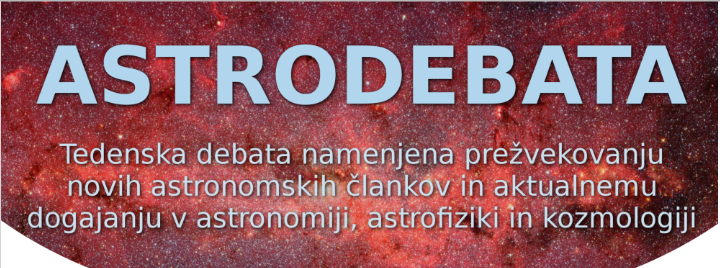V četrtek, 19. septembra 2024, bo ob 10. uri Astrodebata, ki jo bo vodil dr. Heitor Ernandes (Univerza v Lundu/Univerza v Uppsali, Švedska). Predavanje (v angleškem jeziku) bo v predavalnici F6. Vabljeni_e!
Neutron-capture Elements Tracing the GSE’s Star Formation History
Heitor Ernandes (Lunds Universitat/Uppsala Universitat, Sweden)
The Gaia Sausage-Enceladus (GSE) was the last major merger and central turning point in the Milky Way’s story. This event, comparable in mass to the Large Magellanic Cloud today, left behind significant debris that provides valuable insights into the assembly history of our galaxy and the chemical evolution of dwarf galaxies. By examining the aftermath of the GSE merger, we can delve deeper into understanding how the Milky Way’s formation unfolded and how dwarf galaxies evolved chemically. Specifically, the distinct patterns of neutron capture elements such as Eu and Ba, along with Mg, offer clues about the star formation history (SFH). Through a comprehensive analysis of data compiled in the SAGA database, we investigated the GSE’s SFH. Elemental abundance ratios ([Eu/NIg], [Bal Mg], and [Eu/Ba]) derived from this study, when compared with those of surviving Milky Way satellites, indicate that the GSE experienced a prolonged period of slow star formation, lasting over 2 Gyr, until it was eventually quenched by merging with the Milky Way. Consequently, these elemental signatures serve as a unique window into the complex history of both surviving and accreted satellites orbiting our galaxy.
Video will be available on this link!
